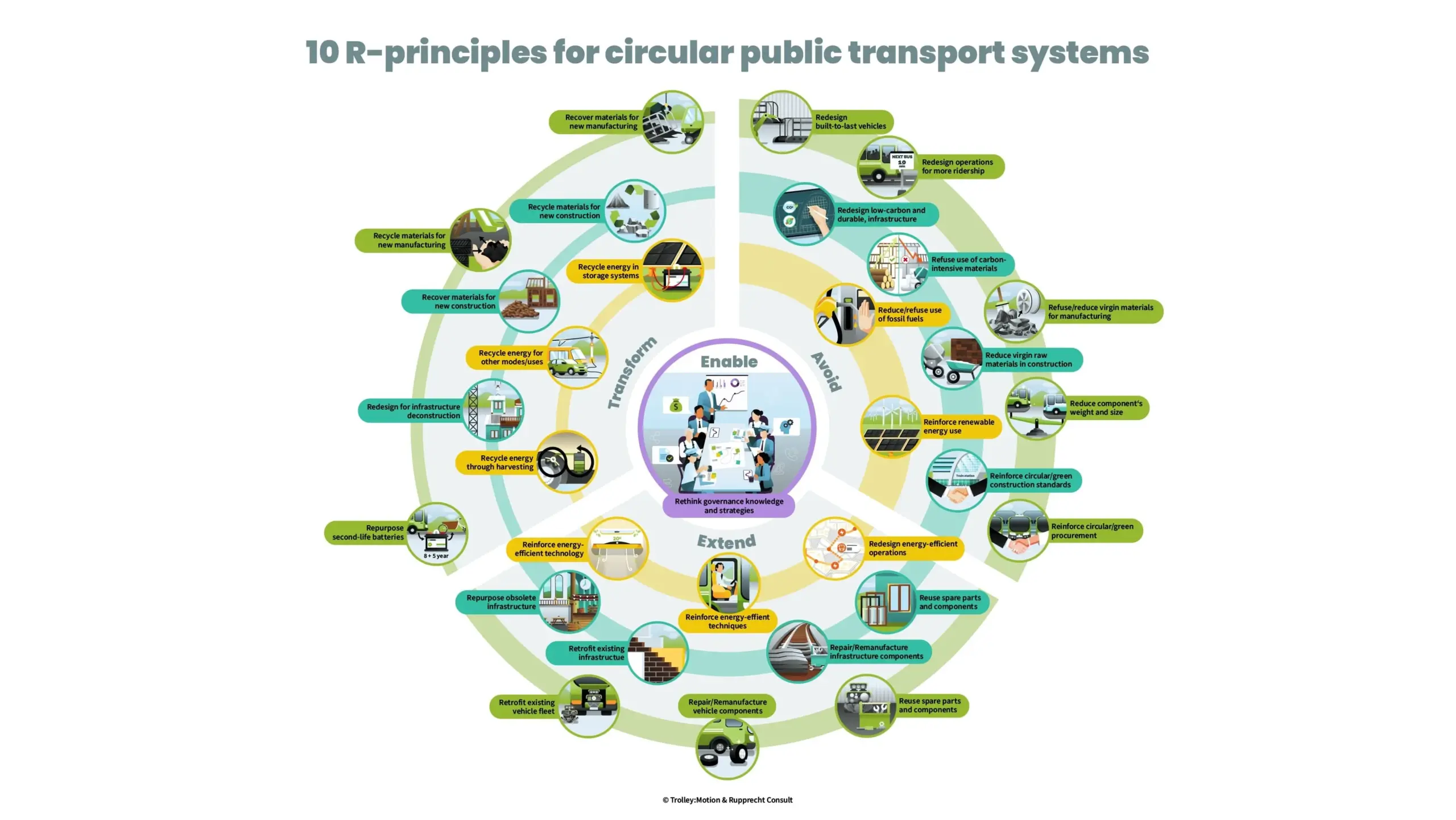Circularity Compass
The Circularity Compass is a life-cycle orientation
tool designed for public transport operators and authorities to foster circularity approaches, principles, and solutions through their planning, procurement, operations, maintenance, and end-of-life stages of public transport systems.
It aims to enhances understanding and raises awareness of the importance and benefits of implementing a circular economy, asesses current status and readiness levels, and uncovers actionable solutions to operationalise the transition towards circular public transport systems where resources are used mindfully, assests are durable and repairable by design, and ecological footprint is being reduced to net zero.
How could circularity look like in public transport?
The Circularity Compass aims to advance a paradigm shift in the life cycle of public transport systems, transitioning from a take-use-throw approach to an avoid-extend-transform-enable model.

In circular public transport systems, the priority lies in applying circularity principles to design and optimize products and processes to prevent unnecessary extraction of raw materials or generation of waste at the avoid stage. Once resources enter the value chain, these principles are concretized into actions that extend the lifespan of resources and products through maintenance and upgrades for as long as possible. When products reach the end of their life, the principles promote a transformation process to recycle materials and resources, putting them back into the value chain as input and recirculating them as many times as possible. At its core, favorable policies, capacities, and institutions enable effective action throughout the cycle.
Seven R-principles, namely, redesign, reinforce, refuse/reduce, reuse, repair/remanufacture, retrofit, and recycle concretize actions to realise change.
Where does my organisation
stand in the transition to circular public transport?
The circularity self-assessment survey serves as a simplified entry point for masspublic transport agencies (TAs) and operators (PTOs) to evaluate their current status of integration of circular economy principles, practices, and approaches in their public transport activities. The self-assessment fosters a holistic viewencouraging entities to break down internal and external silos and reflect on not only their immediate activities but also their impact along the entire value chain.
It is important to note that this self-assessment offers a preliminary, subjective analysis, and it does not replace in-depth, data-driven diagnostics. It aims to spark questions and reflection, raise awareness, initiate discussions, and collaborations, and encourage the installation of a circular mindset acrossdepartments and with stakeholders throughout the value chain.
The self-assessment is then a stepping stone toward more detailed evaluations suchas material and energy flow analyses, life cycle and value chain assessments and the implementation of sustainable solutions such as the shift to renewable energy, zero-emission fleets, and low-carbon building practices.